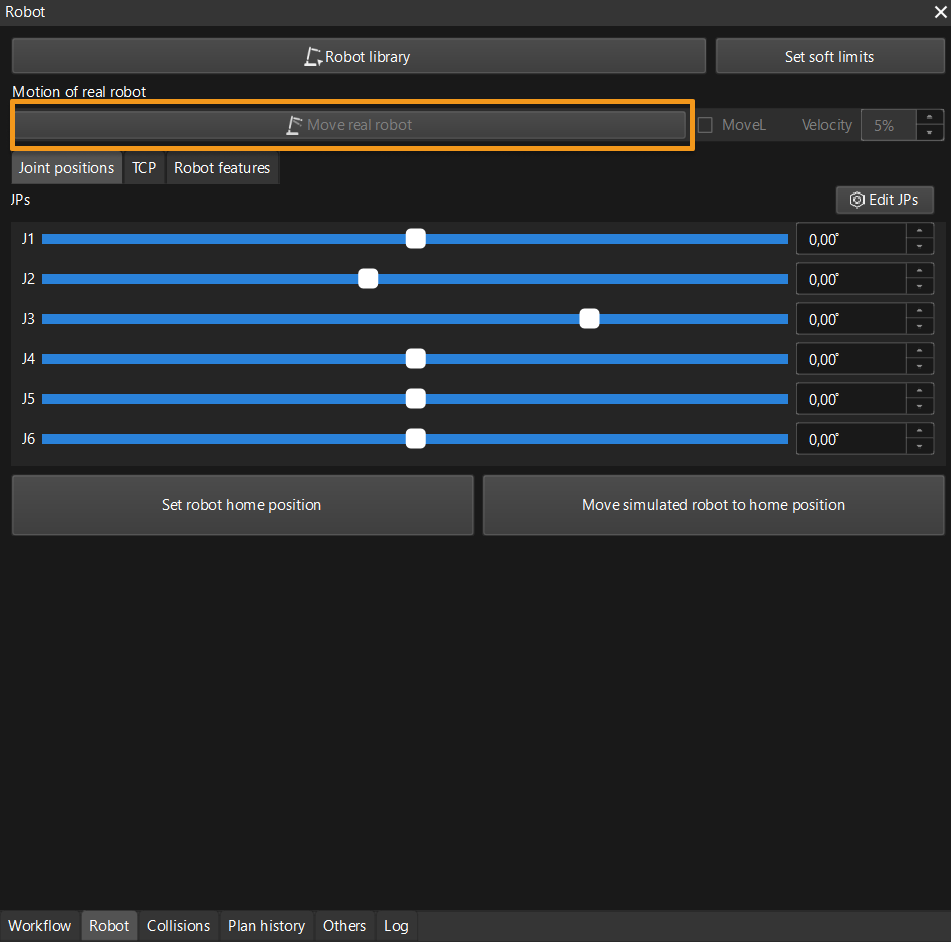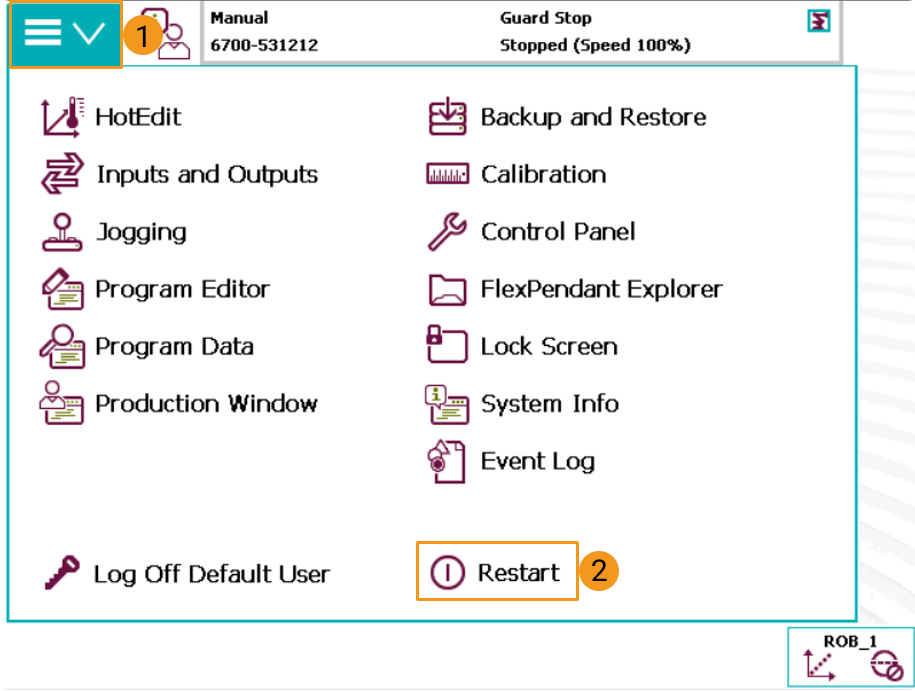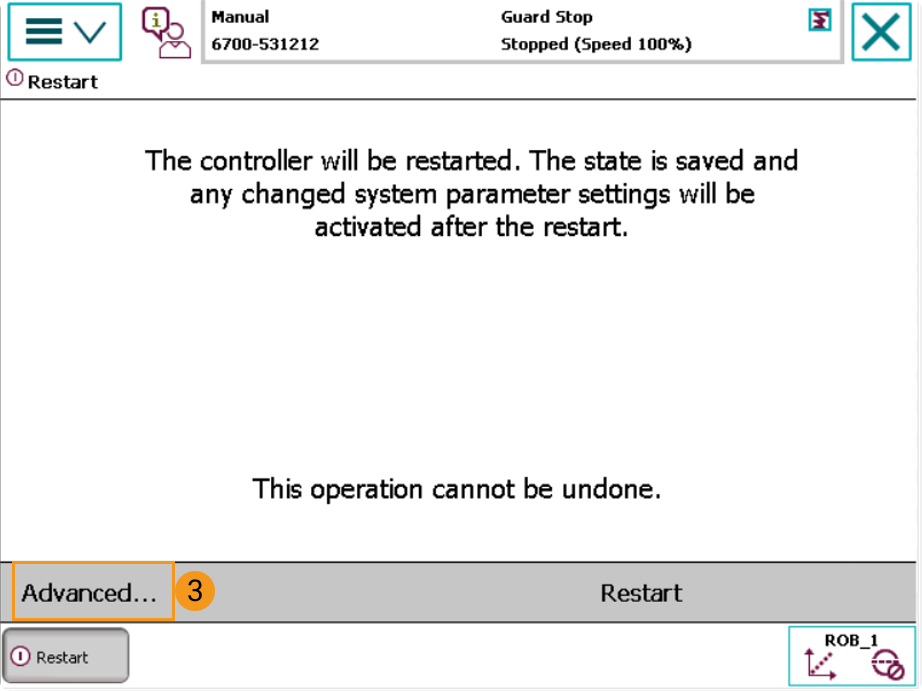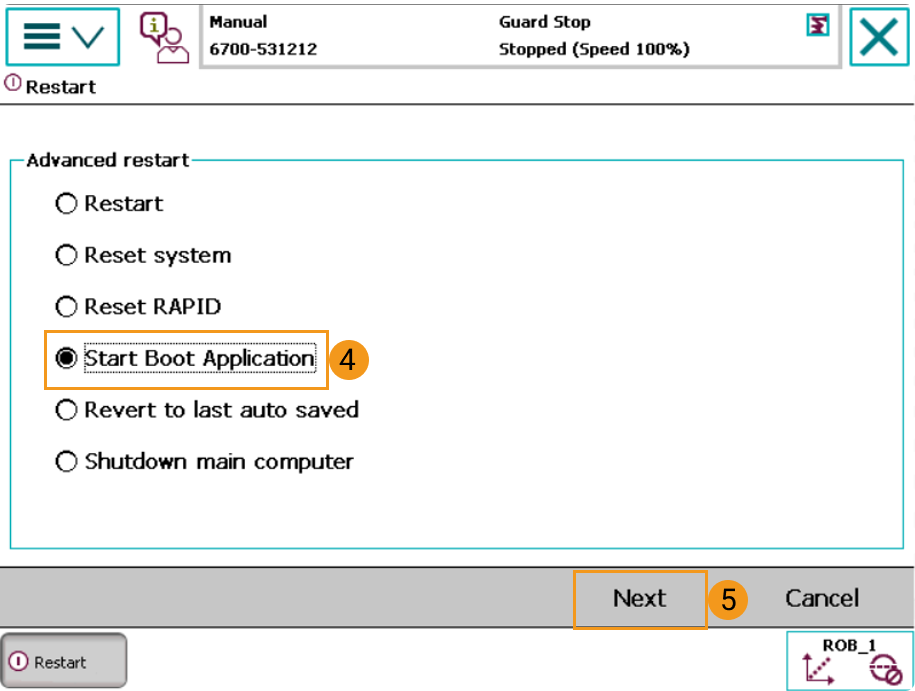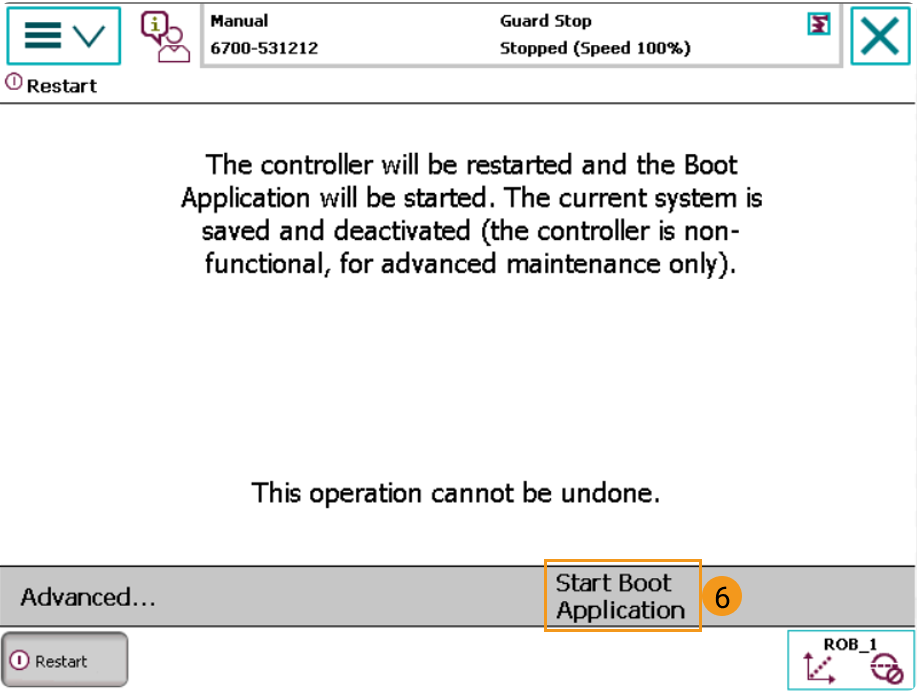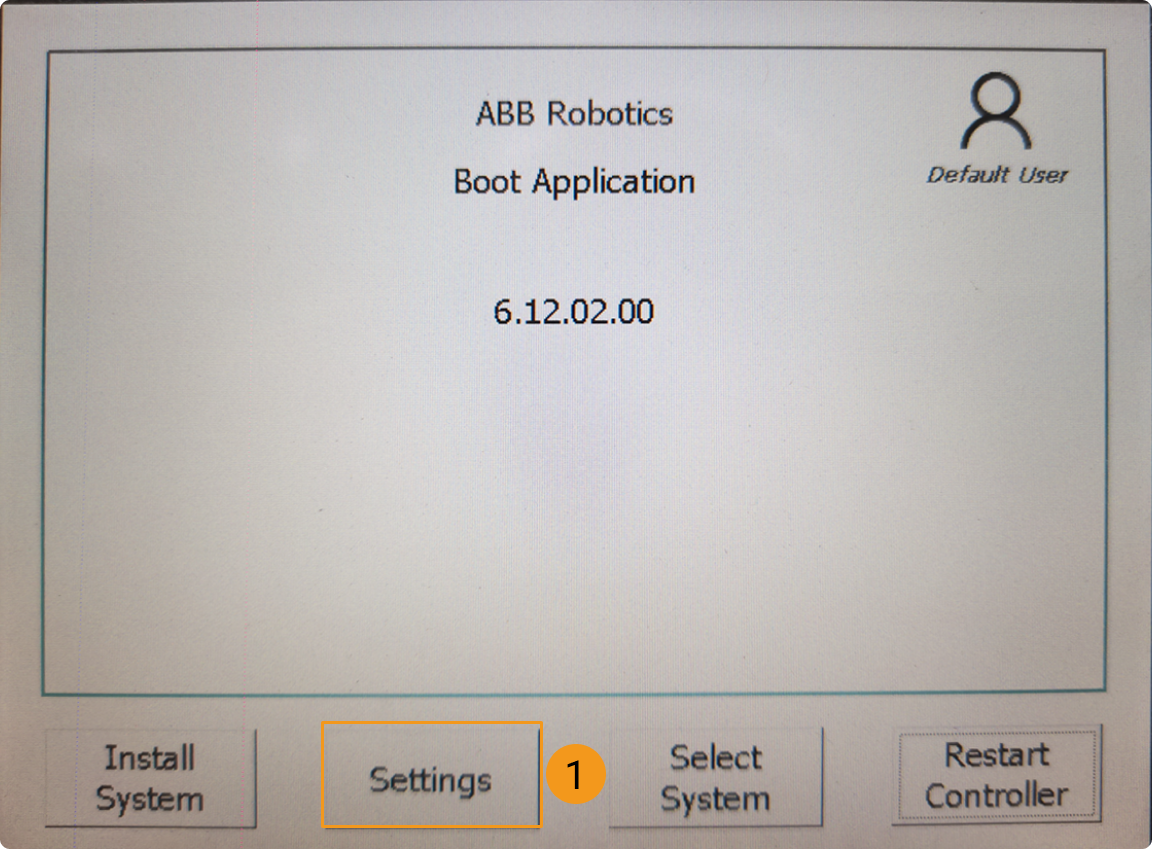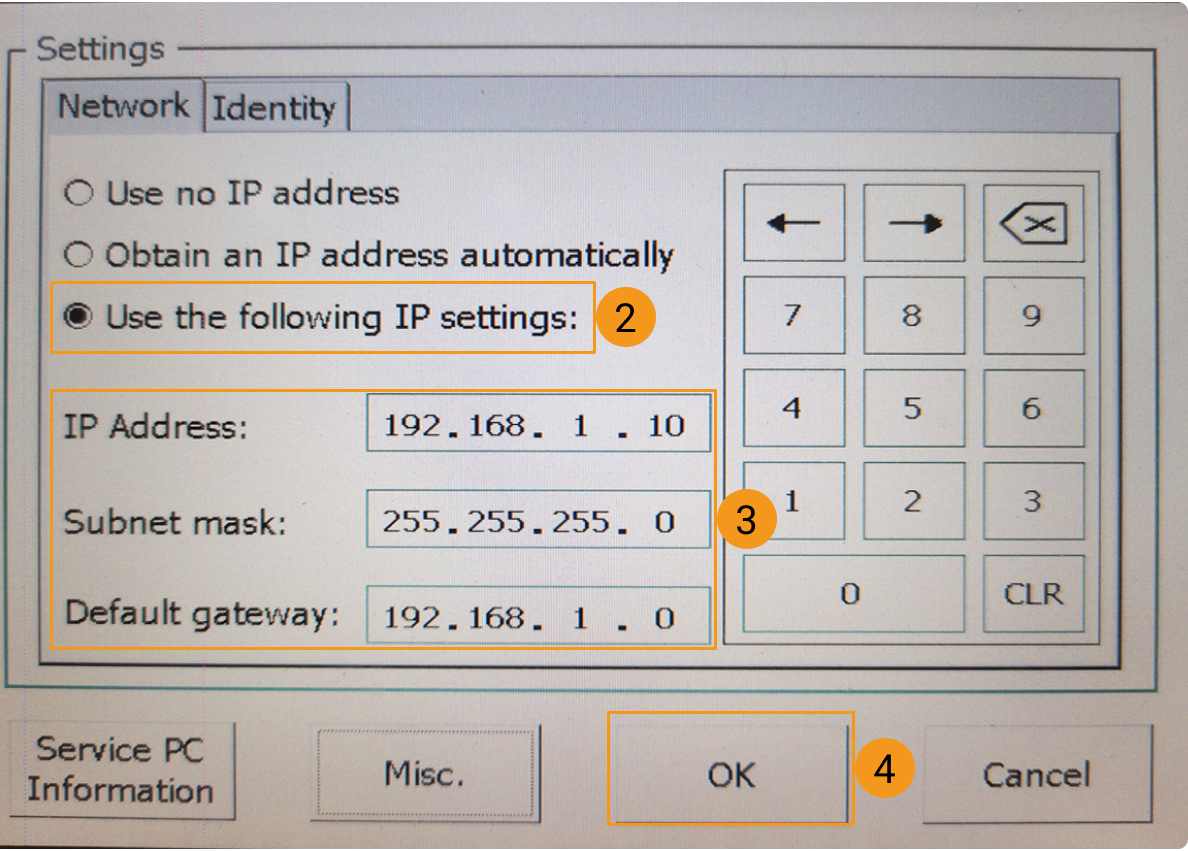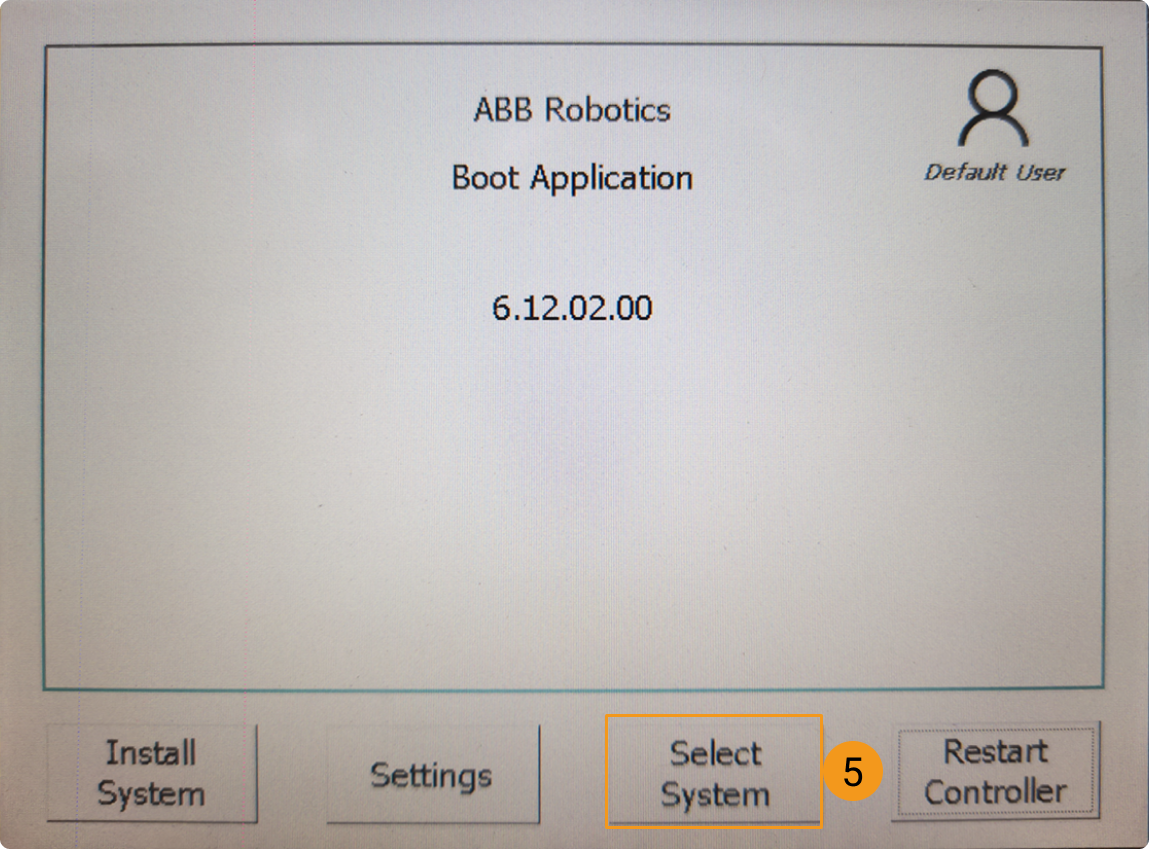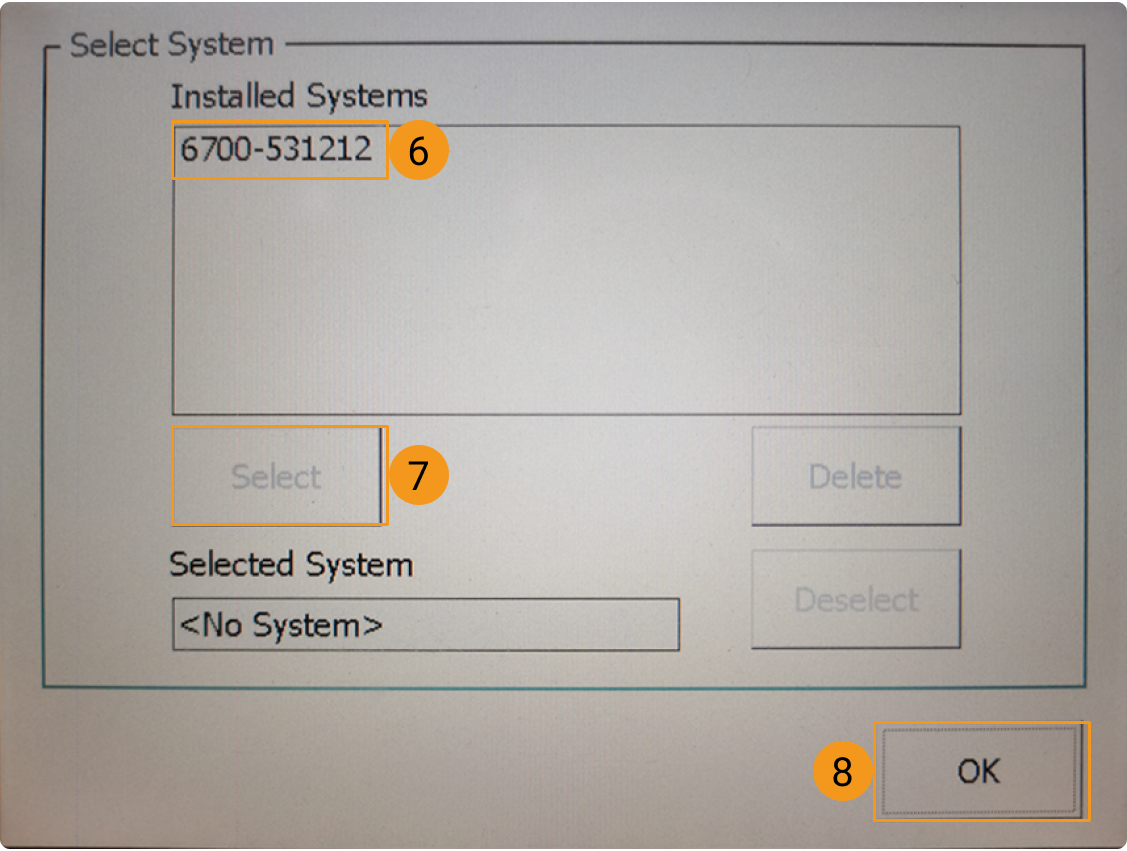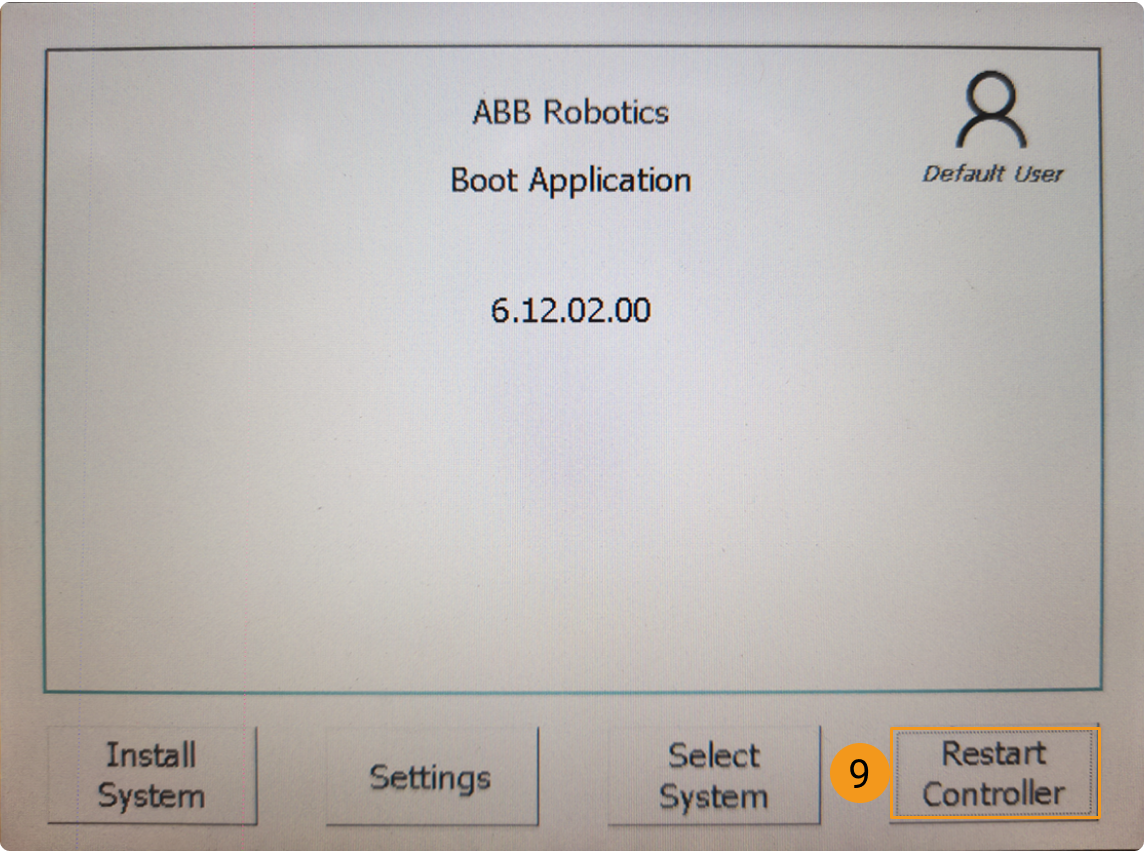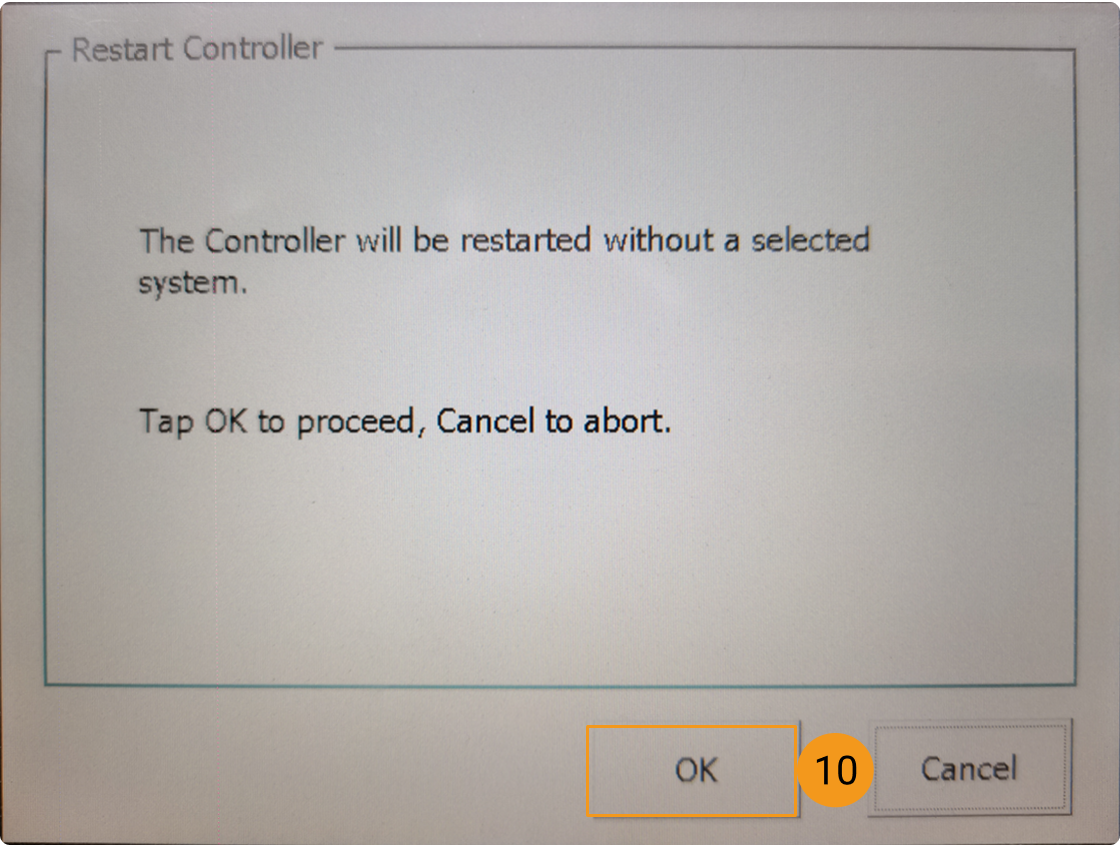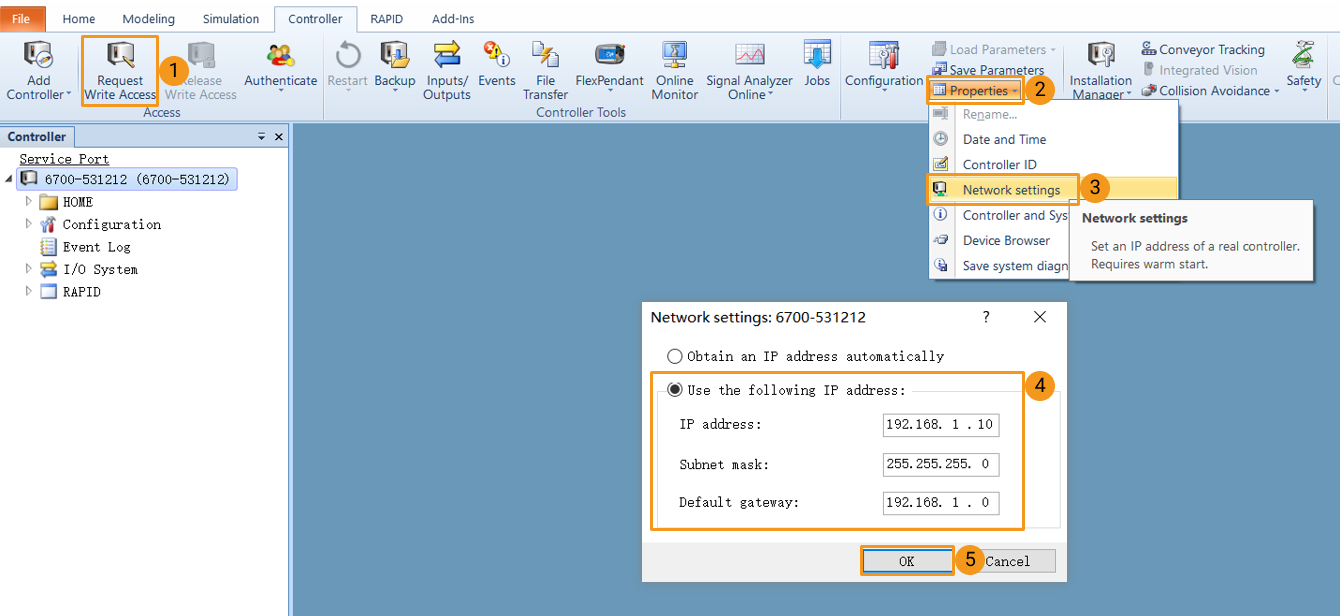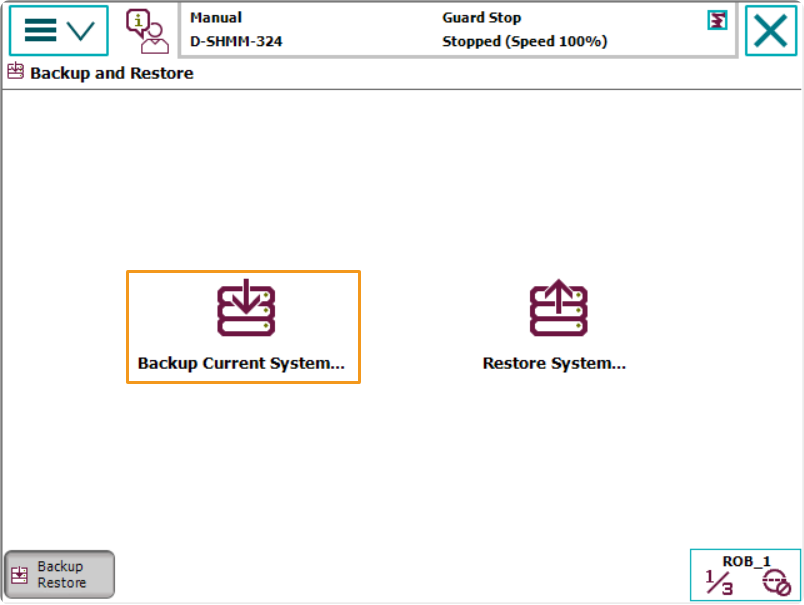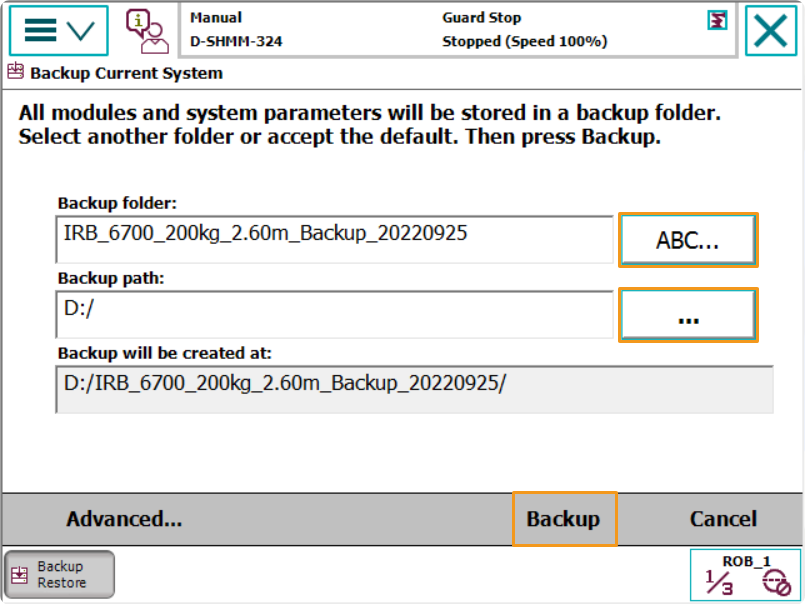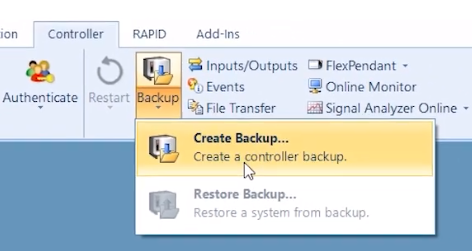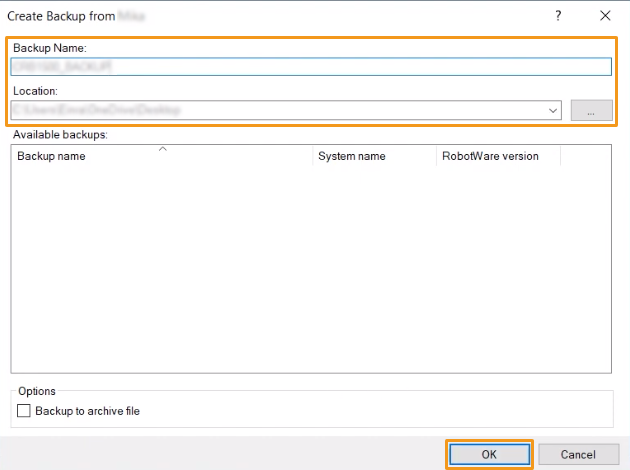Robot Communication Setup
In this tutorial, you will learn how to load the Master-Control program files to the ABB robot and configure the Master-Control communication.
|
Video Tutorial: Robot Interface Configuration
|
Preparation
Check the Controller and RobotWare Version
-
Make sure that D652 or DSQC1030 IO board has been installed on the robot controller.
-
The robot controller is IRC4 or IRC5, and the version of RobotWare is between 6.02 to 6.15.
Check the RobotWare version on the teach pendant, as shown below.
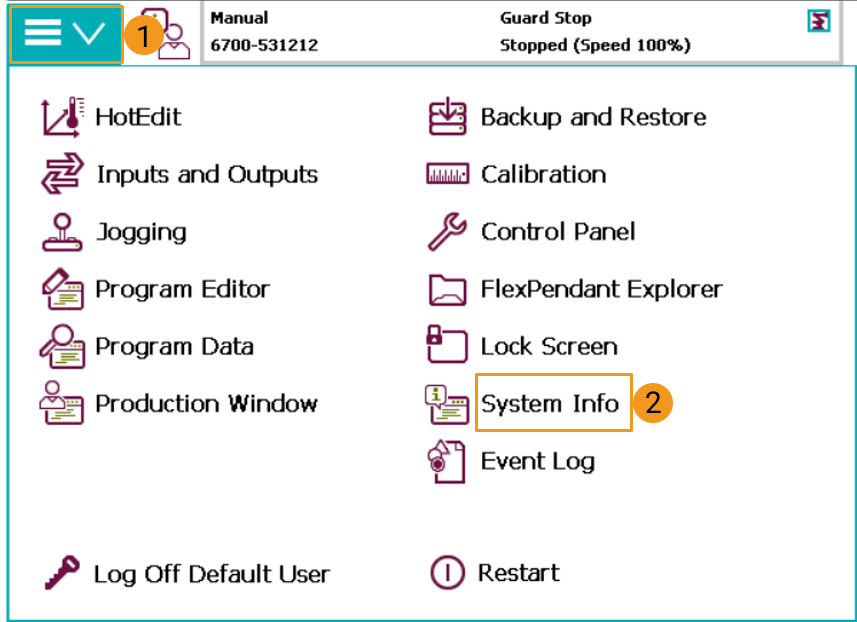
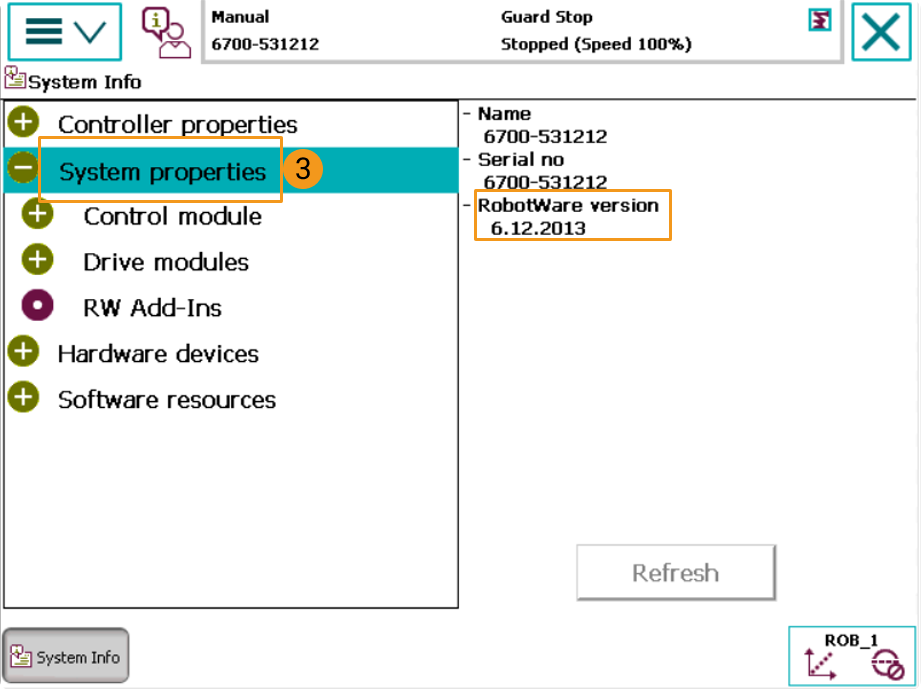
-
The following control module options should be installed:
-
616-1 PCInterface
-
623-1 Multitasking
Check whether the above controller options are installed on the teach pendant, as shown below.
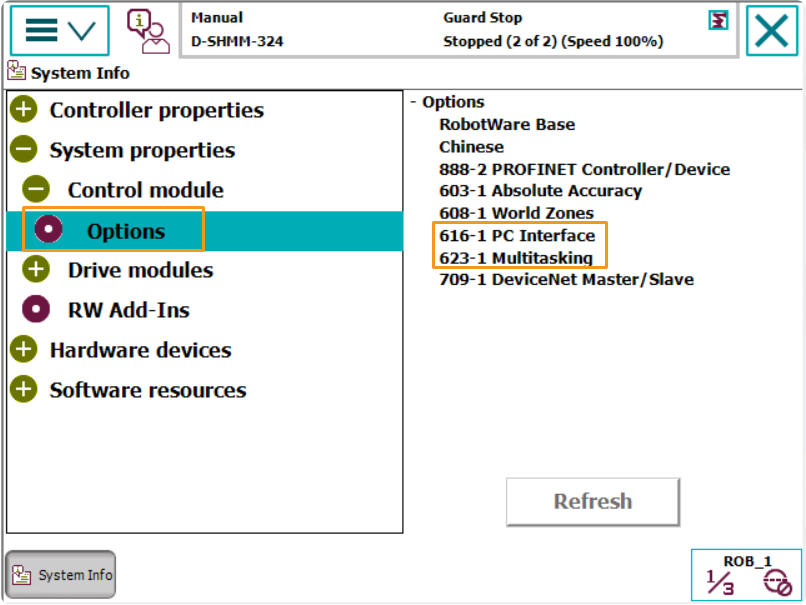
-
|
Connect the Network
Connect the Hardware
Plug the Ethernet cable of the IPC into the X6 (WAN) port of the robot controller, as shown below.
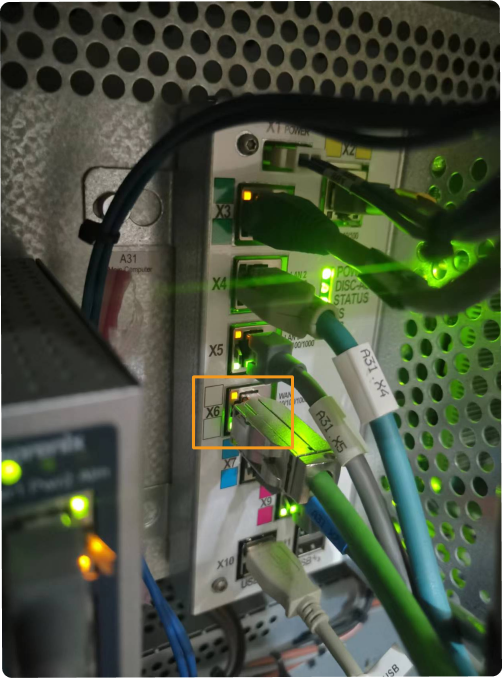
Set IP Addresses
You can set the IP address on the teach pendant or in RobotStudio.
| RobotStudio is the simulation and offline programming software for ABB robots. This software can be installed on the IPC or another computer. In this example, RobotStudio is installed on another computer. |
Check if the IP address is changed
Click in the to check if the IP address is changed.
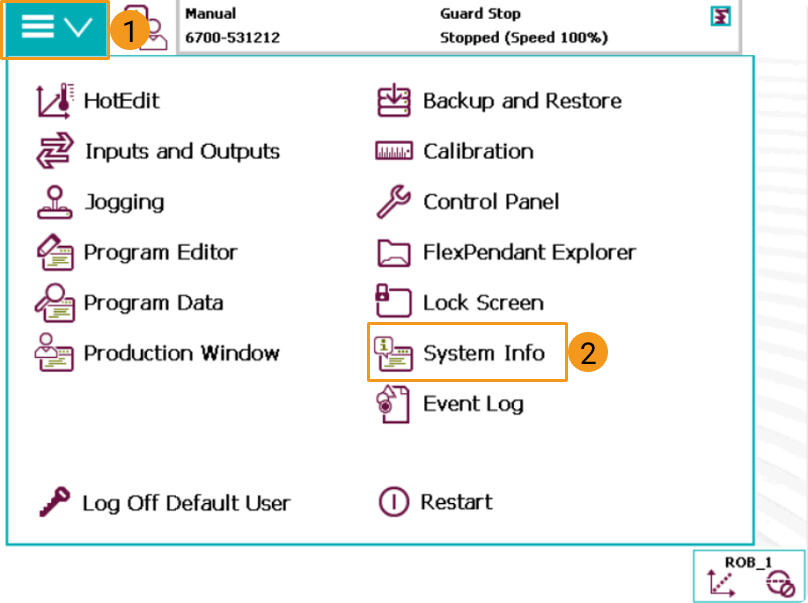
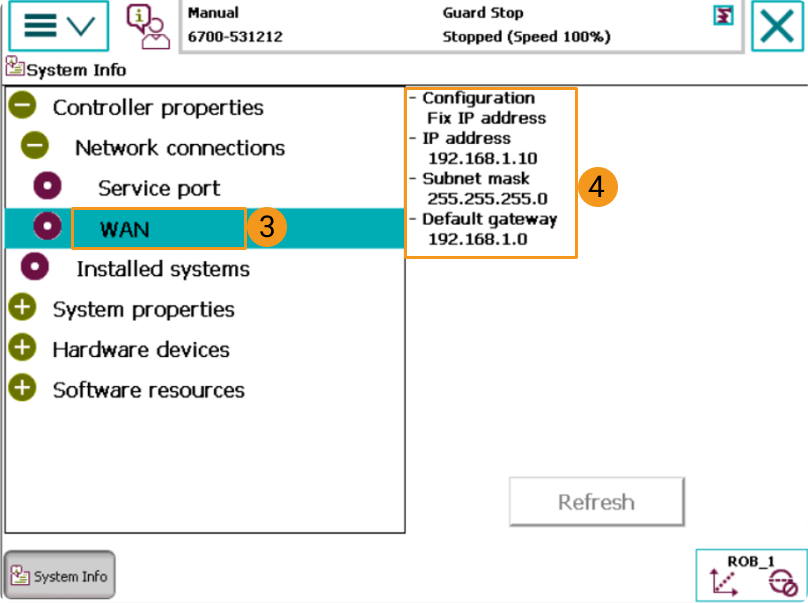
|
Load the Program Files to the Robot (Auto)
After you set parameters in the Robot Program Loader tool, the tool auto-loads files to the ABB robot. Follow the steps below.
| If the auto-load process fails and you cannot resolve the issue, proceed to Load the Program Files to the Robot (Manual). |
-
Switch the key in the controller to the automatic mode, and ensure that the motor indicator light is on.
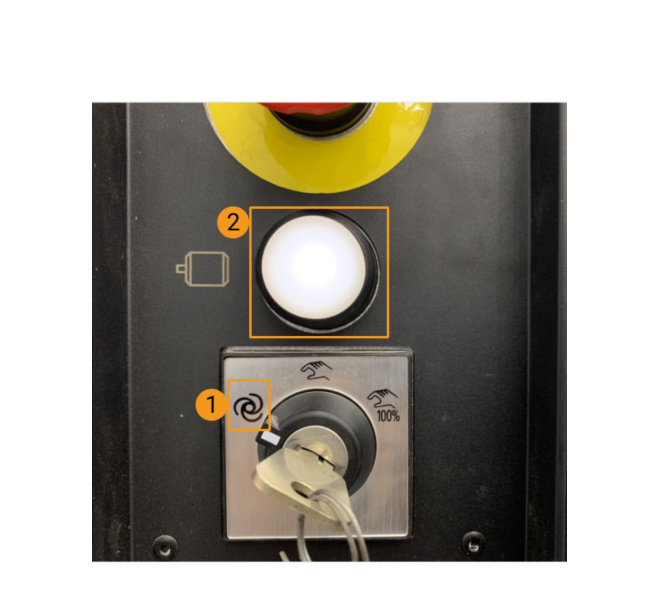
-
Navigate to the installation directory of Mech-Vision and Mech-Viz, go to the Robot Program Loader folder by using the Mech-Center\tool\Robot Program Loader path, and then double-click the Robot Program Loader program to open the loader. The main interface of the loader appears.


-
Select the ABB robot brand, enter the actual robot IP address, and then click Connect.
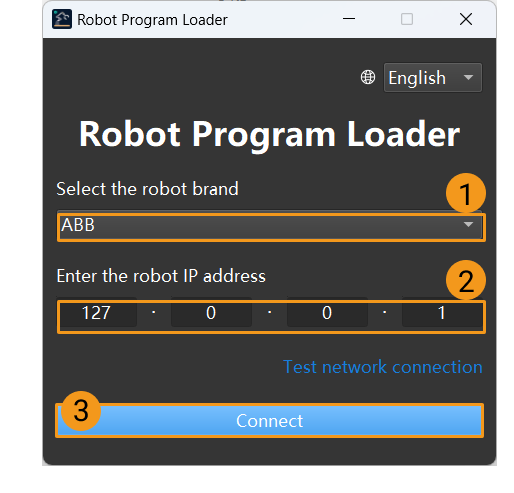
If the connection fails, click Test network connection in the lower-right corner to troubleshoot the issue. -
In the ABB Program Loading interface, select a folder to store the backup files and then click Back up. If the files are backed up, “Back up successfully” will be displayed in the Log section.
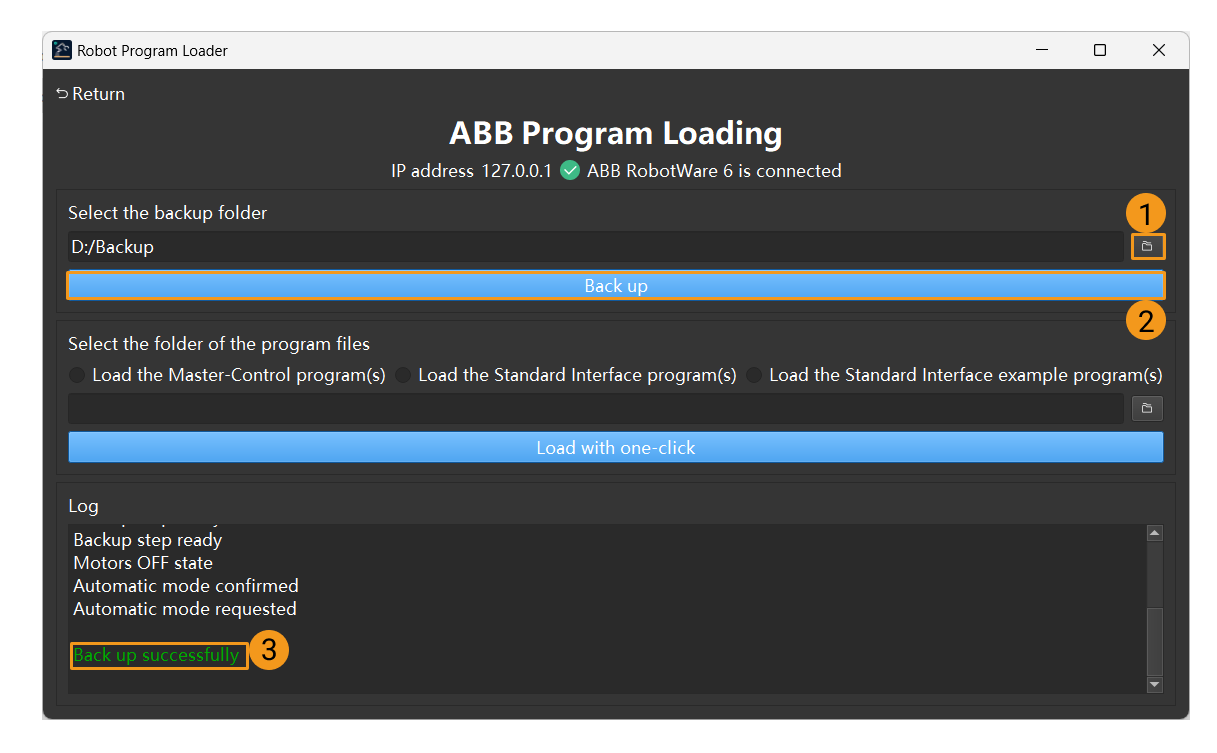
-
After the backup succeeds, select Load the Master-Control program(s) to confirm the folder that stores the program files and then select the IO card type of the robot. In this example, No IO card is selected. Your card type may be different from the card type that is used in this example. Set the card type based on your actual scenario. After you set the preceding parameters, click Load with one-click. If a message that indicates the program files are successfully loaded appears in the Log section, the files are loaded to the robot.
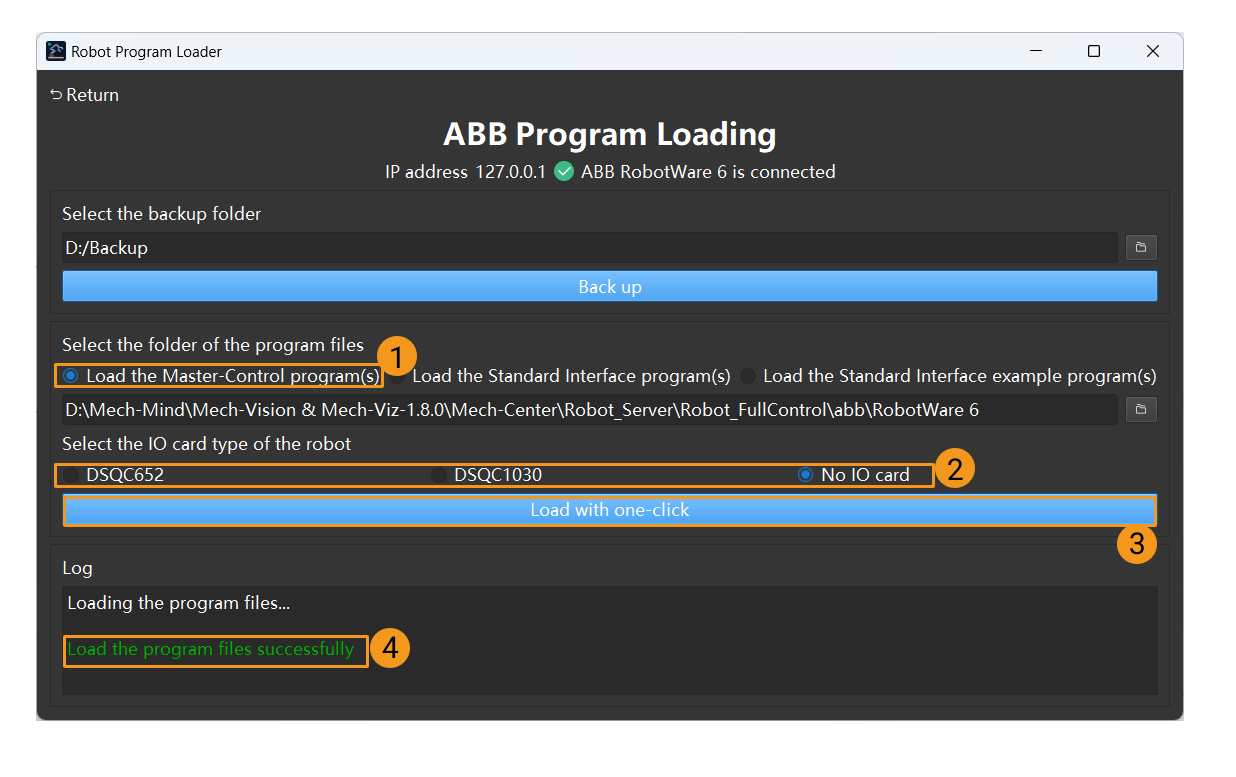
If the auto-load process succeeds, the controller restarts. After the auto-load process succeeds, proceed to Test Master-Control Communication.
Load the Program Files to the Robot (Manual)
If the autoload process succeeds, skip this section.
Preparation
Backup
Before you operate the robot, follow the backup instructions below to back up the system so that the robot system can be restored if an incorrect operation occurs. You can back up the files by using the teach pendant or RobotStudio.
Resetting
|
Reset RAPID
Determine whether you need to reset RAPID based on the following flowchart.
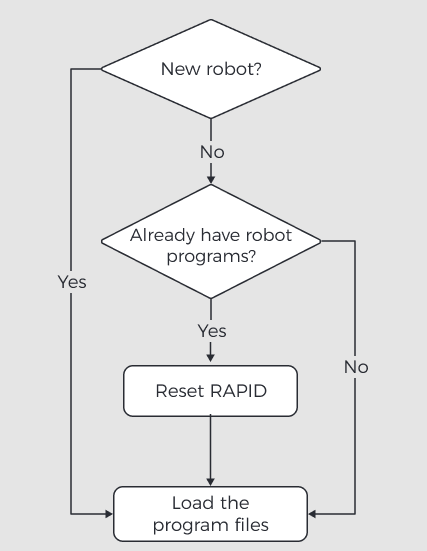
-
Go to the home page by using the menu in the upper-left corner, and then click Restart.
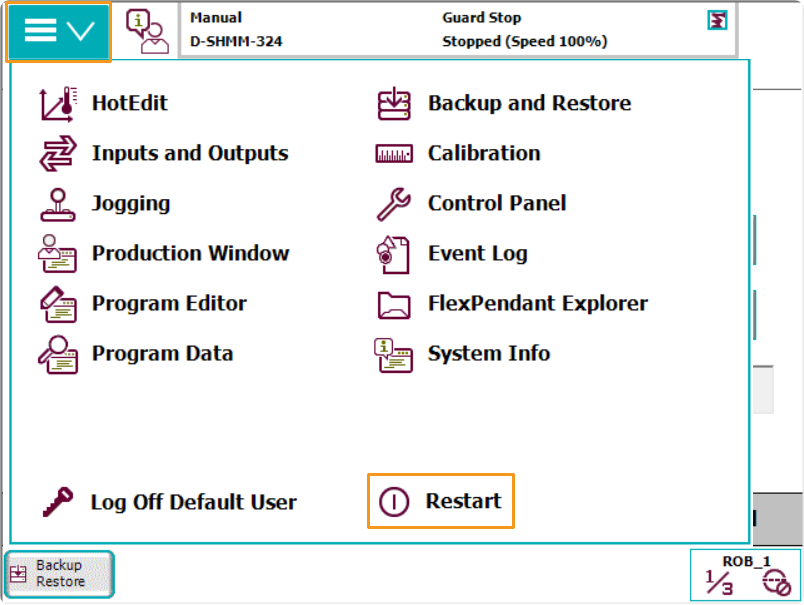
-
Click Advanced....
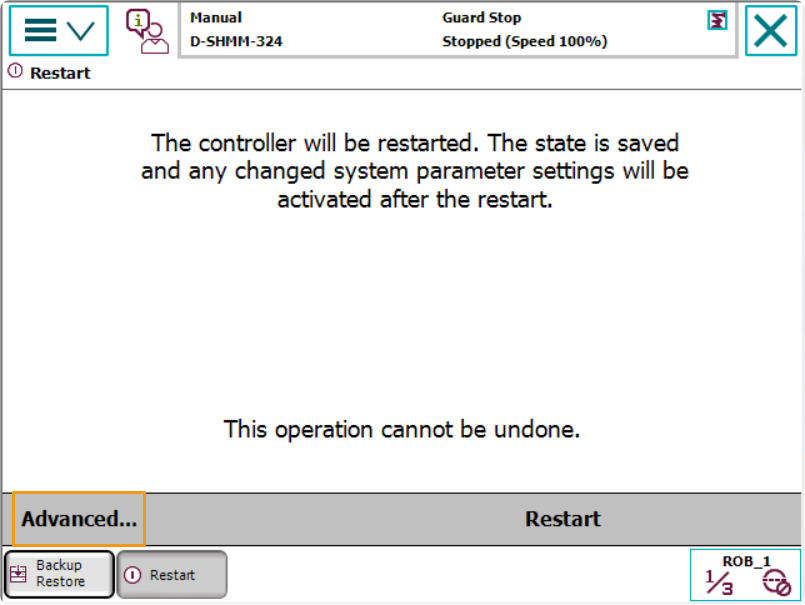
-
Select Reset RAPID, and then click Next.
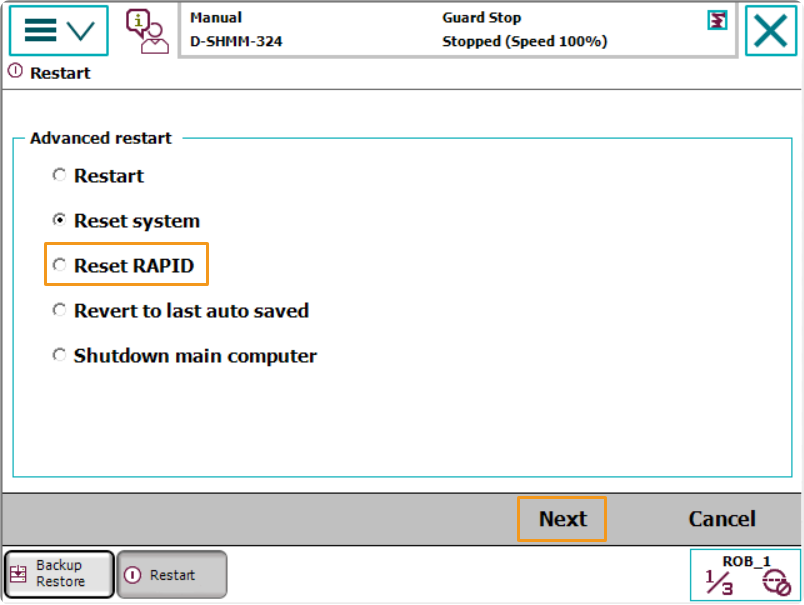
-
Click the Reset RAPID.
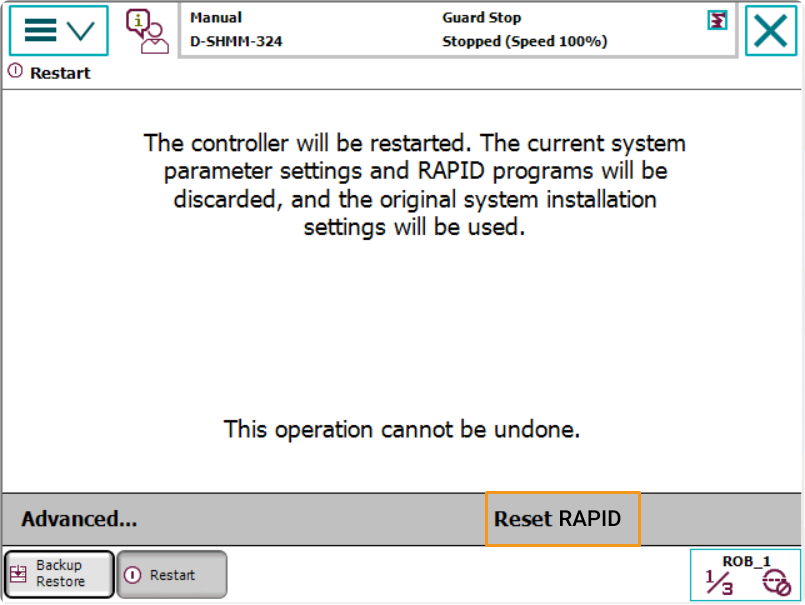
Reset System
| Resetting the system will restore the factory settings. Please make sure that you have completed the backup operation. |
-
Go to the home page by using the menu in the upper-left corner, and then click Restart.

-
Click Advanced....

-
Select Reset system and click Next.
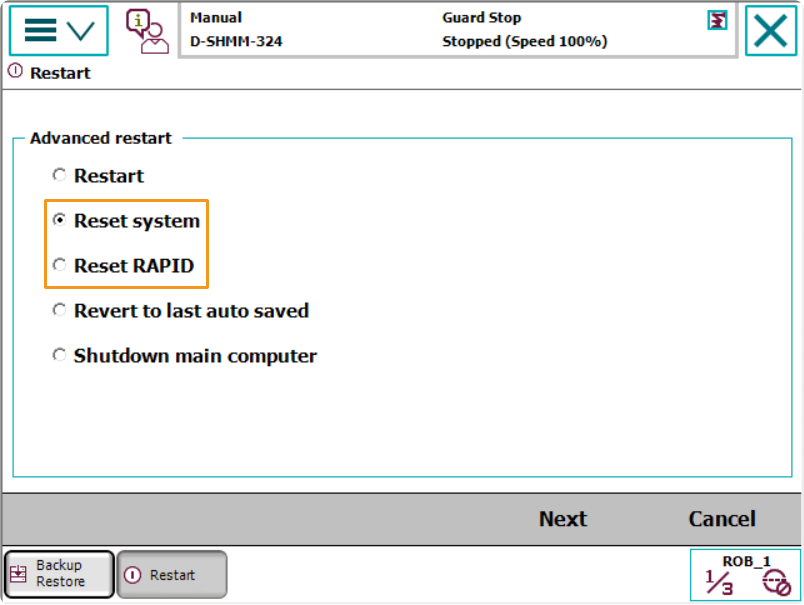
-
Click the Reset system button.

Obtain the Program Files
Copy the program files into a USB flash drive. Please locate the folder where Mech-Vision and Mech-Viz are installed, and the files are stored in Mech-Center/Robot_Server/Robot_FullControl/abb/RobotWare 6.
-
The config files in the
RobotWare 6folder should be compatible with the I/O Unit in use. Choose the right config files from the config folders based on the actual scenario.-
If a DSQC 652 I/O unit is used, select D652.cfg and SYS.cfg.
-
If a DSQC 1030 I/O unit is used, select DSQC1030.cfg and SYS.cfg.
-
If other I/O unit is used or the program is only used for automatic calibration, select EIO.cfg and SYS.cfg.
-
-
In the
RobotWare 6folder, files in the MM folder are robot program modules.
Open RobotStudio and Connect to the Controller
Click the Controller menu of RobotStudio, and select on the toolbar. In the prompted Add Controller dialog box, select the controller, and click the OK button.
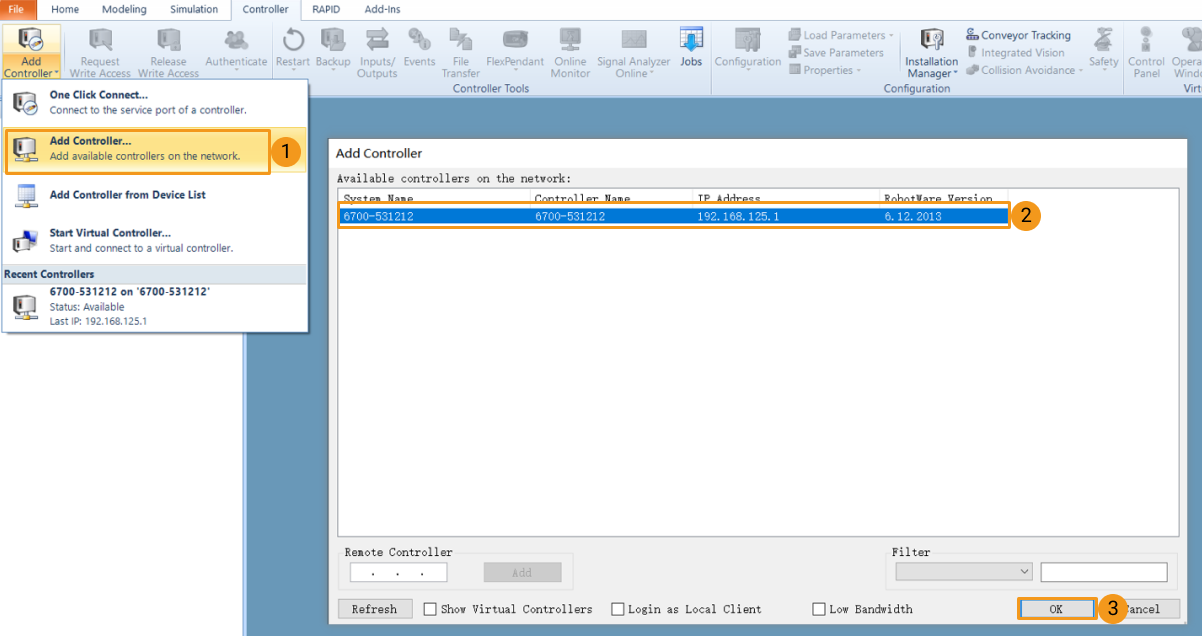
Obtain Write Access to the Robot
-
On the toolbar, click Request Write Access to request the write access to the teach pendant.

-
In the prompted Request for Write Access dialog box on the teach pendant, tap Grant.
Load the Robot Configuration Files
-
Click the Controller menu of RobotStudio, and select on the toolbar. Select the configuration files to import from the USB flash drive, select the Load parameters and replace duplicates radio button, and then click the Open button.
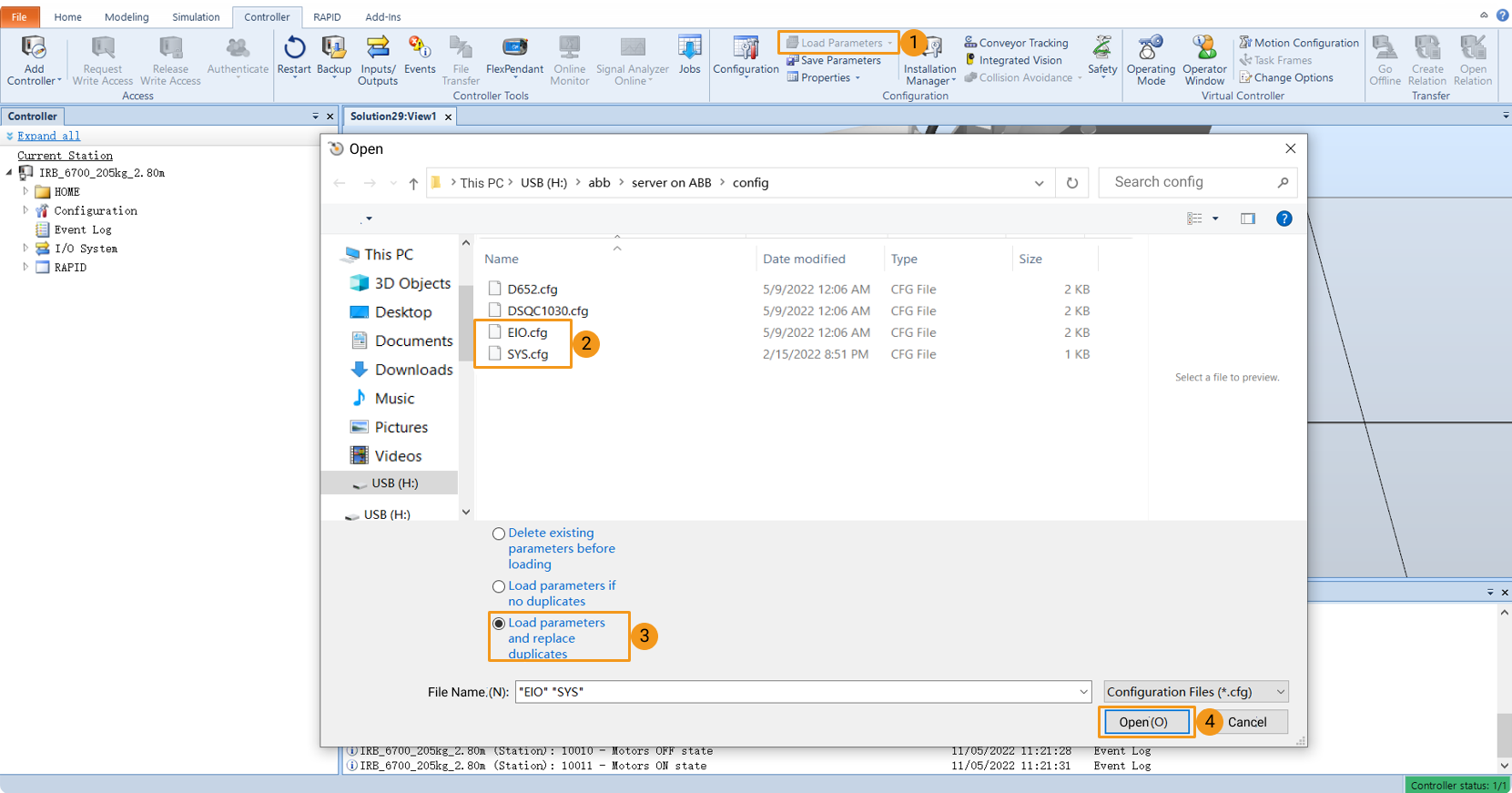
-
In the prompted dialog boxes, click Confirm.
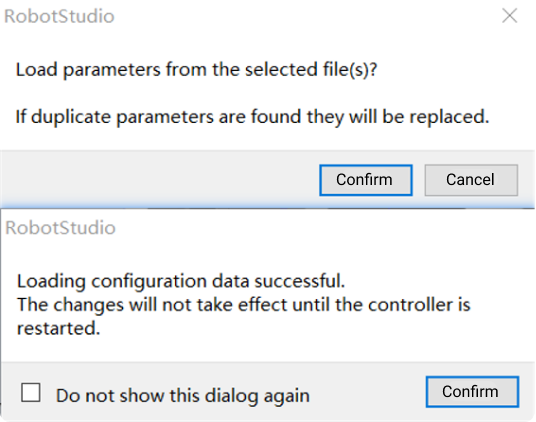
Load the Robot Program Modules
-
Click the Controller menu of RobotStudio, and select File Transfer on the toolbar. On the left panel of the File Transfer interface, select the “MM” folder, and then click the Transfer button to transfer this folder to the HOME directory of the robot system.
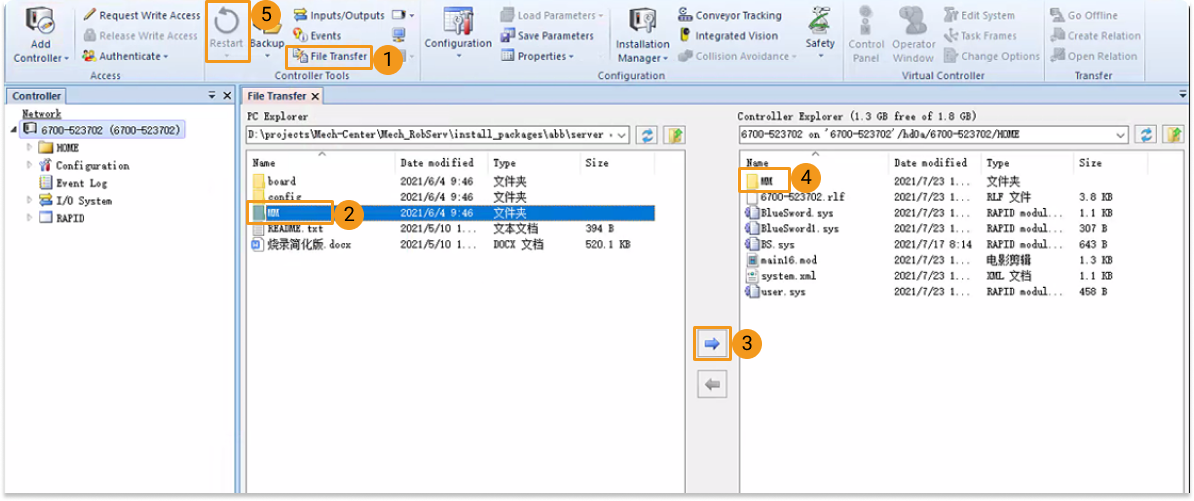
-
Click the Controller menu of RobotStudio, and select Restart on the toolbar to restart the robot system.
Till now, you have loaded the master-control program and the configuration files to the robot.
Test Master-Control Communication
After the robot system has been rebooted, perform the following steps to test whether the master-control communication can be established with the robot:
Switch the Robot to Automatic Mode
-
In the robot controller, switch the robot to the automatic mode by using the switch key.
-
In the prompted dialog box on the teach pendant, tap Confirm.
-
In the robot controller, press the motor power button to power up the robot. When the robot is powered on, this button is solid on.
Run the Program
-
Move the PP of tasks T_ROB1 and safe_area to Main respectively. After selecting PP to Main, if a window as shown below pops up, please tap Yes to confirm.
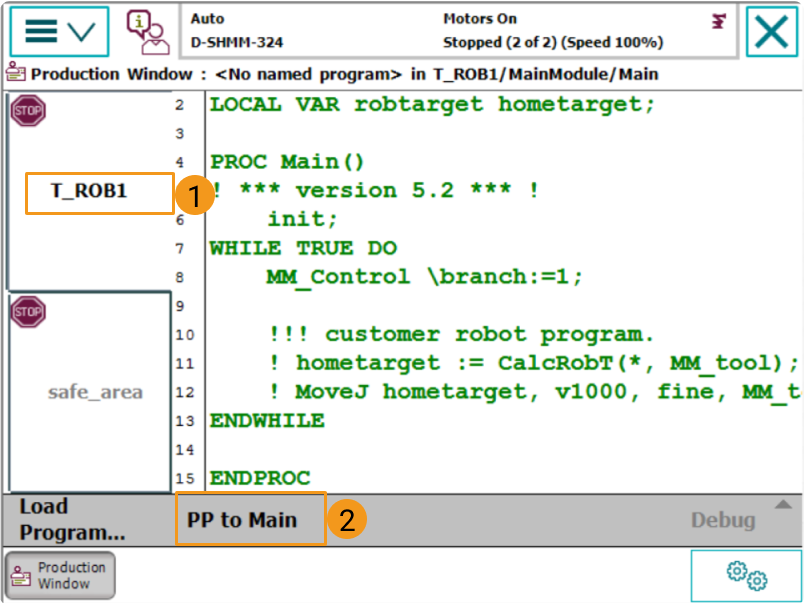
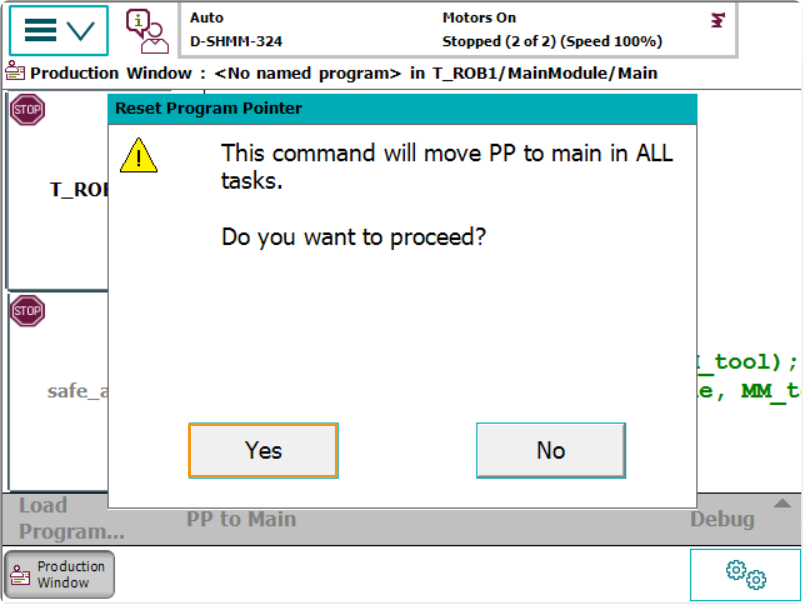
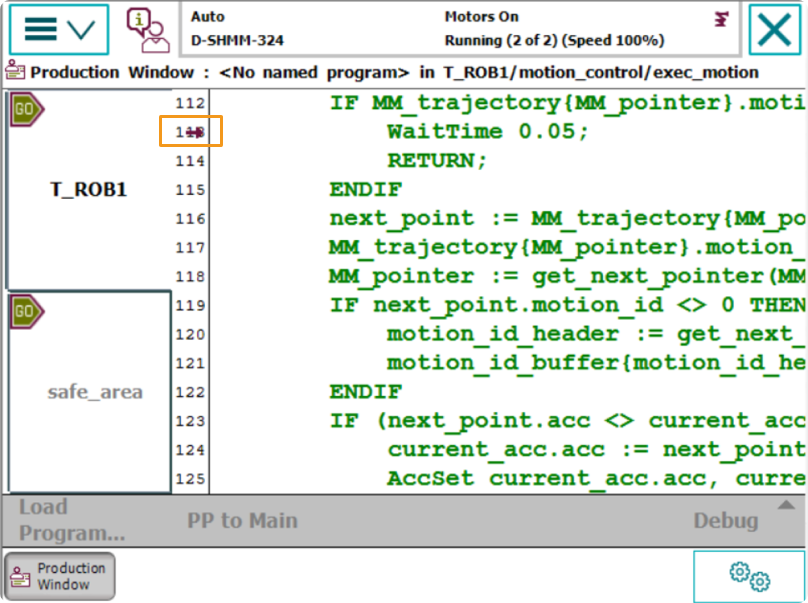

-
Run the program manually or automatically. The program pointer is shown in the figure below.
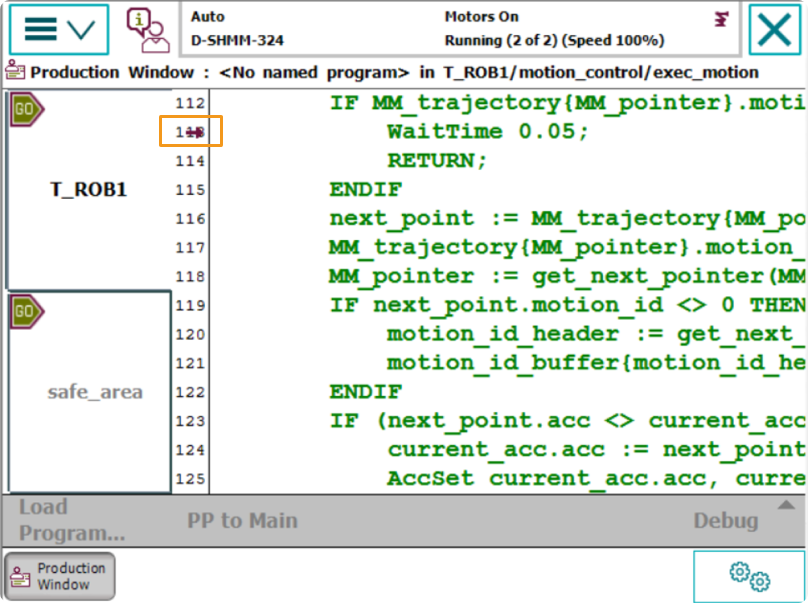
Create a Mech-Viz Project
-
Open Mech-Viz and press the Ctrl+N key to createMech-Viz a project. Select the robot model corresponding to your real robot brand and model on the interface as shown below.
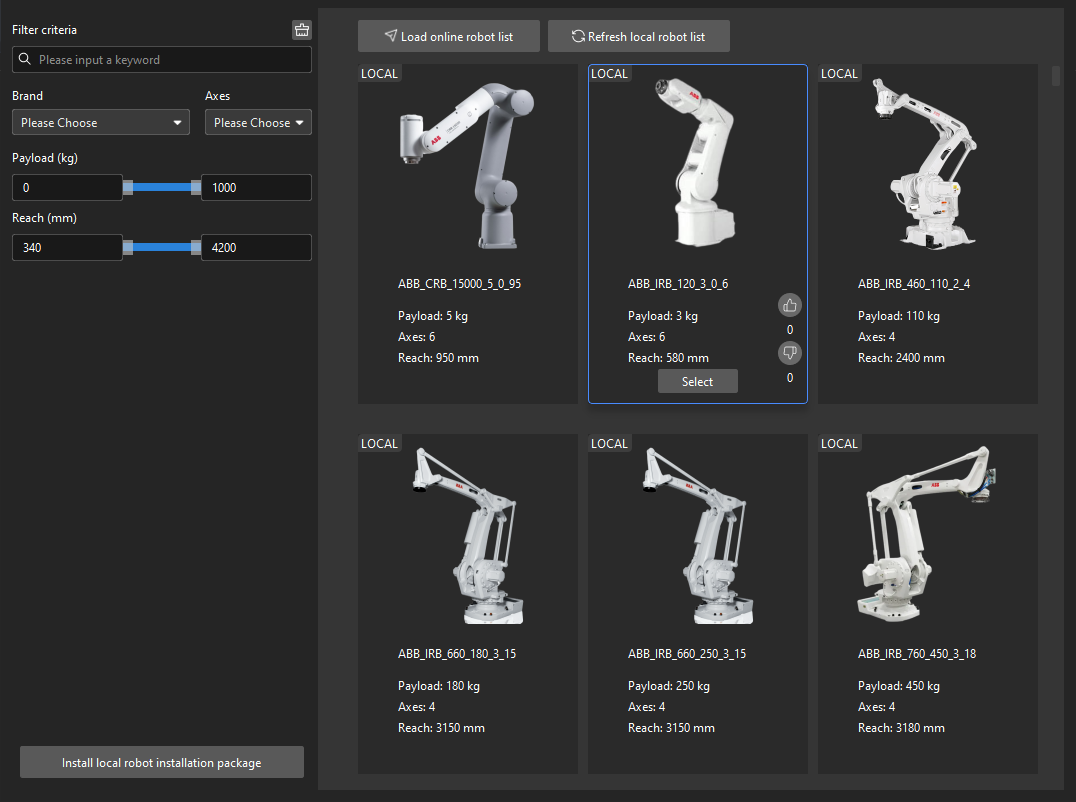
-
Press the Ctrl+S key and create or select a folder to save the project.
-
Right-click the project name in the left panel in Mech-Viz and select Autoload Project checkbox.

Connect to the Robot
-
Click Master-Control Robot on the toolbar of Mech-Viz.
-
Input the IP address of the real robot in Robot IP address (the IP address in the picture is only an example). Click Connect the robot.
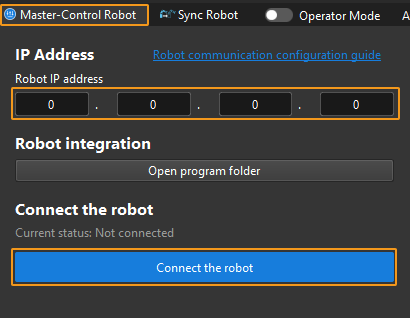
If the Mech-Viz successfully connects the real robot, the current status will change to Connected. Meanwhile, the icon in the toolbar will turn from blue to green.
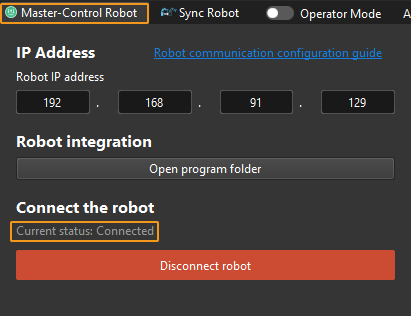
If the connection fails, please double-check the robot IP address.
Move the Robot
-
In the toolbar of Mech-Viz, change the “Vel.” (velocity) and “Acc.” (acceleration) parameters to 5%.

-
Click Sync Robot in the toolbar to synchronize the poses of the simulated robot in the 3D simulation space with the poses of the real robot. Then click Sync Robot again to disable the synchronization.

-
On the Robot tab in the lower-right corner of the interface, slightly adjust the joint position of J1 (for example, from 0° to 3°). The stimulated robot will move accordingly.
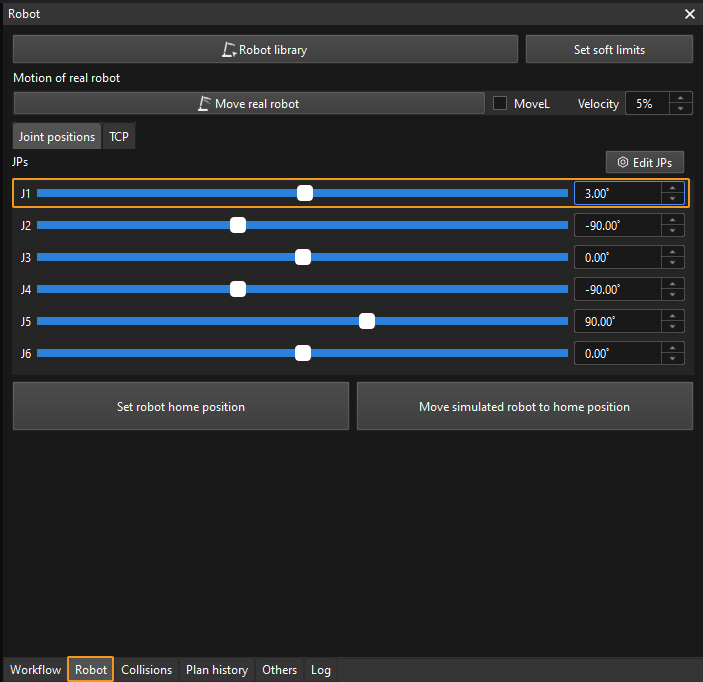
-
Click Move real robot and check if the real robot has moved. If the real robot has reached the JPs set for the simulated robot, the master-control communication is working.
When moving the robot, please ensure the safety of personnel. In the case of an emergency, press the emergency stop button on the teach pendant! 